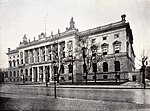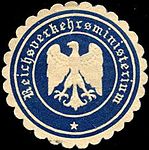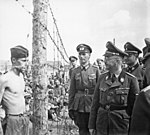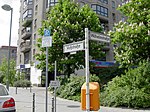Presidium of the Bundesrat
The Präsidium of the Bundesrat in Germany is responsible for various functions, including the Bundesrat's budget allocation and other internal matters. The current President of the Bundesrat is Reiner Haseloff, the Minister President of Saxony Anhalt, whose one-year term started on 1 November 2020. The President convenes and chairs plenary sessions of the body and is formally responsible for representing the Bundesrat of Germany. He or she is aided by two vice-presidents who play an advisory role and deputise in the president's absence. The three constitute the Präsidium of the Bundesrat.If the office of Federal President of Germany is vacant, the President of the Bundesrat serves as acting Federal President.
Excerpt from the Wikipedia article Presidium of the Bundesrat (License: CC BY-SA 3.0, Authors).Presidium of the Bundesrat
Leipziger Straße, Berlin Mitte
Geographical coordinates (GPS) Address Phone number Website Nearby Places Show on map
Geographical coordinates (GPS)
| Latitude | Longitude |
|---|---|
| N 52.509166666667 ° | E 13.381388888889 ° |
Address
Bundesrat
Leipziger Straße 3-4
10117 Berlin, Mitte
Germany
Open on Google Maps











